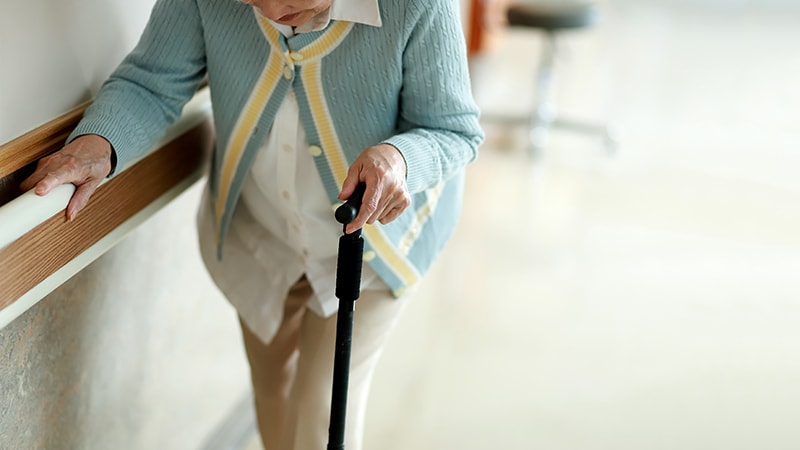Takeaway
- Regular physical activity, including mild activities like walking and yard work, is associated with reduced fracture risk in elderly women in the Women's Health Initiative.
- Sedentary time was associated with mildly elevated fracture risk.
Why this matters
- Physical activity is known from previous studies to be associated with lower hip fracture risk in elderly women.
- This is the first large cohort to assess fracture risk associated with mild physical activity and sedentary activity.
Study design
- Prospective cohort of 77,206 postmenopausal women aged 50-79 years in 1993 studied for a mean follow-up of 14.0±5.2 years.
- Physical activity and sedentary time were self-reported.
- Funding: NIH.
Key results
- Higher levels of total physical activity were associated with 18% lower hip fracture risk (>17.7 metabolic equivalent [MET] hours/week vs none: HR, 0.82; 95% CI, 0.72-0.95).
- Reduced hip fracture was also associated with:
- Walking (>7.5 MET hours/week vs none; HR, 0.88; 95% CI, 0.78-0.98).
- Yard work (HR, 0.90; 95% CI, 0.82-0.99, respectively).
- Mild activity (HR, 0.82; 95% CI, 0.73-0.93, respectively).
- Total physical activity associated with higher risk of knee fracture (>17.7 MET hours/week vs none: HR, 1.26; 95% CI, 1.05-1.50).
- Sedentary time was associated with modestly elevated total fracture risk (>9.5 hours/day vs <6.5 hours/day; HR, 1.04: 95% CI, 1.01-1.07).
Limitations
- Observational design.
References
References



